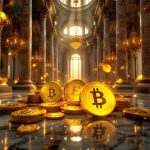
When Amateurs Feel Like Legends: The Psychology Behind Meme Stock Madness
Jun 30, 2025
January 2021. GameStop hits $480. A dying brick-and-mortar video game retailer becomes the hottest stock on Earth. The crowd went wild for a gravy train that made no fundamental sense, turning mall-based retail into a generational wealth play. Novice traders with stimulus checks and smartphone apps convinced themselves they’d cracked the code that Wall Street had somehow missed for decades.
When amateurs feel like legends, markets get dangerous, the GameStop saga wasn’t an anomaly—it was a masterclass in mass psychology, a real-time demonstration of how cognitive biases can turn reasonable people into financial kamikazes. The same behavioral patterns that drove tulip mania in 1637 and the dot-com bubble in 2000 were playing out again, just faster and louder, amplified by social media and zero-commission trading apps.
What biases fuel the meme stock mania? The answer isn’t found in corporate earnings or technical analysis. It’s written in the ancient code of human psychology, the same mental shortcuts that helped our ancestors survive but now lead investors into predictable traps dressed as revolutionary opportunities.
The Dunning-Kruger Effect: Confidence Without Competence
Nothing is more dangerous than a novice investor on a winning streak. The Dunning-Kruger effect explains why people with minimal knowledge often display maximum confidence. A few lucky trades in a bull market transform weekend warriors into self-proclaimed market savants. They mistake a favorable environment for personal genius, confusing correlation with causation.
During the meme stock explosion, Reddit forums filled with traders who’d been investing for months offering advice like seasoned professionals. They’d never lived through a bear market, never watched their account balance evaporate, never learned the hard lessons that separate speculation from investment. Their confidence wasn’t based on competence—it was based on ignorance of what they didn’t know.
This cognitive bias created a feedback loop. New traders saw other new traders making money and assumed the game was easier than traditional finance suggested. Why spend years learning about balance sheets and cash flows when you could just follow the crowd into whatever stock was trending on social media? The complexity of markets got reduced to simple narratives: retail versus Wall Street, diamond hands versus paper hands, apes versus suits.
Professional investors, meanwhile, often fell victim to the opposite trap. Their expertise became a liability when markets stopped behaving rationally. They knew too much about traditional valuation metrics to appreciate the power of pure momentum and social proof. Sometimes being right and making money are entirely different skills.
Herd Mentality: The Magnetic Pull of the Mob
Humans are pack animals. We survived on the savanna by sticking together, and that same instinct drives modern market behavior. When everyone else is buying GameStop, the fear of missing out overwhelms rational analysis. Social proof becomes more compelling than fundamental research.
The meme stock phenomenon weaponized herd mentality through technology. Reddit communities like WallStreetBets created digital tribes where belonging required buying and holding specific stocks. Selling became betrayal. Questioning the narrative marked you as an outsider, a shill, or worse—someone who lacked the courage to diamond-hand their way to financial freedom.
This tribal psychology turned investing into identity. Portfolio positions became political statements. Stock prices became scorecards in a cultural war between retail traders and institutional investors. The actual businesses underlying the stocks—their products, their profits, their prospects—faded into background noise compared to the intoxicating power of collective action.
The speed of modern communication accelerated these dynamics. What used to take months to develop now happens in hours. A single post could trigger millions of trades. The wisdom of crowds became the madness of crowds with smartphones, creating volatility that had nothing to do with business fundamentals and everything to do with viral psychology.
Confirmation Bias: Echo Chambers and Selective Reality
Once investors committed to meme stocks, confirmation bias locked them in. Every piece of information got filtered through the lens of their existing beliefs. Positive news proved the thesis; negative news was dismissed as manipulation by hedge funds or misunderstanding by mainstream media. The narrative became self-reinforcing, immune to contradictory evidence.
Social media algorithms amplified this effect. Platforms showed users more of what they wanted to see, creating echo chambers where dissenting voices got drowned out. Traders surrounded themselves with information that confirmed their biases while avoiding data that challenged their positions. This wasn’t conscious deception—it was unconscious selection of comfortable truths over uncomfortable realities.
The result was a parallel universe where traditional metrics didn’t apply. Fundamental analysis became irrelevant. Technical analysis got reduced to rocket ship emojis. Due diligence meant scrolling through memes and upvoting posts that reinforced predetermined conclusions. The stock market transformed into a social media platform where likes and shares determined prices more than earnings and cash flow.
Professional analysts found themselves in an impossible position. Their negative research reports were interpreted as evidence of corruption rather than legitimate concern. The more they warned about overvaluation, the more retail traders viewed them as enemies to be defeated rather than experts to be consulted.
Revenge Trading: When Markets Become Personal
Behind the meme stock mania lurked something darker than greed: revenge. Many retail traders felt burned by the 2008 financial crisis, the slow recovery, the widening wealth gap. They watched Wall Street get bailed out while Main Street struggled with foreclosures and unemployment. Meme stocks offered a chance to turn the tables, to make the system work for ordinary people instead of just the connected elite.
This emotional undercurrent transformed trading into warfare. Buying GameStop wasn’t just an investment decision—it was a form of financial protest. Short squeezes became moral victories. Making money mattered less than making hedge funds lose money. The psychological satisfaction of inflicting pain on institutional investors justified ignoring traditional risk management.
Revenge trading explains why many meme stock investors held on long after rational exit points. They weren’t optimizing for profits; they were optimizing for emotional satisfaction. The chance to stick it to Wall Street was worth losing money, especially money they couldn’t afford to lose in the first place.
This mindset created its own trap. When the initial euphoria faded and prices declined, the same revenge psychology prevented cutting losses. Selling felt like surrender, like admitting the system had won again. Better to hold and hope than to realize the very institutions they sought to punish had outlasted another amateur uprising.
Recency Bias: When Yesterday Predicts Forever
The meme stock explosion occurred during an unprecedented bull market. Low interest rates, fiscal stimulus, and pandemic lockdowns created perfect conditions for speculative excess. New traders entered the market during this goldilocks environment and assumed it represented normal conditions. Recent experience became their baseline for future expectations.
Recency bias made every dip look like a buying opportunity. If GameStop could rally from $20 to $400, why couldn’t it rally from $40 to $800? Past performance, despite every disclaimer, became prologue. The idea that markets could decline for extended periods seemed impossible to investors whose only experience was with rising prices.
This bias extended beyond individual stocks to market structure itself. The combination of retail trading apps, social media coordination, and accommodative monetary policy created conditions that hadn’t existed in previous generations. New traders assumed this was the new normal rather than a temporary alignment of unusual factors.
When conditions changed—when interest rates rose, when stimulus ended, when the economy reopened—the same factors that drove meme stocks higher began working in reverse. But recency bias made it difficult for investors to adapt. They kept expecting the old playbook to work in a new environment, leading to continued losses long after the original thesis had been invalidated.
Authority Bias: Influencers as Financial Advisors
Traditional financial authority came from institutions: banks, brokerages, regulatory agencies. The meme stock era democratized authority, transferring influence from credentialed professionals to social media personalities with large followings. YouTubers and TikTok creators became financial advisors. Reddit posts carried more weight than research reports.
This shift wasn’t entirely negative. Traditional financial advice often served institutional interests more than individual investors. But the pendulum swung too far in the opposite direction. Charismatic content creators with no professional training or fiduciary responsibility gained massive influence over retail investment decisions.
Authority bias made followers treat these influencers’ opinions as gospel. A single video or post could move millions of dollars into specific stocks. The creators themselves often seemed surprised by their influence, but they kept producing content that fed the machine. The attention economy and the investment economy merged, creating conflicts of interest that weren’t always disclosed or understood.
The most successful meme stock influencers understood their audience’s psychological needs. They offered simple explanations for complex phenomena. They provided community and belonging. They promised ordinary people extraordinary outcomes. These emotional benefits often mattered more than actual financial results, which helps explain why many followers stayed loyal even after losing money.
Historical Echoes: Manias Never Really Change
The meme stock phenomenon felt unprecedented to participants, but market historians recognized familiar patterns. The tulip mania of 1637, the South Sea Bubble of 1720, the railroad speculation of the 1840s, the dot-com bubble of the late 1990s—all featured the same psychological dynamics playing out with different assets and technologies.
Each generation believes their mania is different, that this time really is different. Tulip speculators convinced themselves they’d discovered a new form of wealth creation. Railroad investors thought they were funding the future of transportation. Dot-com enthusiasts believed the internet had changed the rules of business forever. Meme stock traders insisted they were revolutionizing finance itself.
The constant across centuries is human nature. Greed, fear, hope, and social pressure drive similar behaviors regardless of the underlying assets or the technological platforms used to trade them. The speed has accelerated—modern manias develop in weeks rather than years—but the psychological patterns remain remarkably consistent.
Understanding this history doesn’t guarantee immunity from future manias. Even sophisticated investors who know the patterns can get caught up in the excitement. But it does provide perspective, a sense that current conditions won’t persist forever, that markets tend to revert to more sustainable norms over time.
The Contrarian’s Opportunity: Profiting from Predictable Irrationality
While crowds chase momentum, contrarian opportunities emerge in the spaces between narratives. The companies and sectors that lack compelling stories often trade at discounts despite solid fundamentals. The boring businesses that don’t generate memes or Reddit threads can compound wealth quietly while attention-seeking investments provide entertainment value.
This doesn’t mean avoiding all momentum plays or dismissing social media entirely. Sometimes the crowd is right, especially during the early stages of genuine technological or social transitions. But recognizing when enthusiasm has outpaced realistic prospects requires the kind of disciplined thinking that viral content tends to short-circuit.
The most sophisticated approach combines behavioral awareness with fundamental analysis. Understanding why certain biases move markets helps with timing and positioning, but sustainable wealth creation requires investments that work even when the stories stop being told and the crowds move on to new obsessions.
Professional money managers who survived the meme stock era learned to respect momentum while maintaining risk management discipline. They participated in some of the upside without betting their entire careers on social media sentiment. The traders who got hurt were those who forgot that all manias eventually end, usually when participants least expect it.
What the Wreckage Teaches
The meme stock mania wasn’t a revolution—it was a reminder. Markets have always been driven by psychology as much as fundamentals. Social media didn’t create new biases; it amplified existing ones and accelerated their impact. The same cognitive errors that led investors astray in previous generations continue operating today, just faster and louder.
Stop believing you’re immune to these biases. You’re not. Start by acknowledging that compelling narratives affect your investment decisions, then build systems to counteract that influence. Set position sizes before you fall in love with a story. Force yourself to articulate the bear case for every momentum play. Create cooling-off periods between hearing exciting news and acting on it.
Most importantly, distinguish between investment and entertainment. Social media trading can be fun, even profitable in the short term, but it shouldn’t determine your long-term financial security. The next time you see rockets and diamond hands flooding your feed, remember that the house always wins in the end—and the house isn’t Wall Street hedge funds. It’s human psychology itself, patient and persistent, waiting for the next generation of amateurs to feel like legends.












